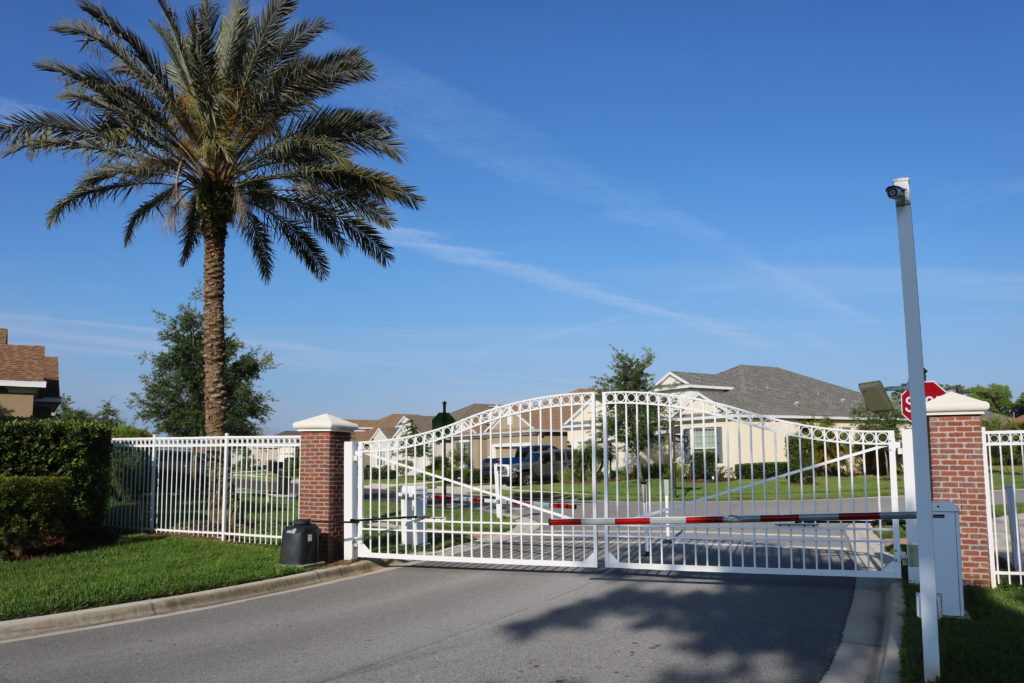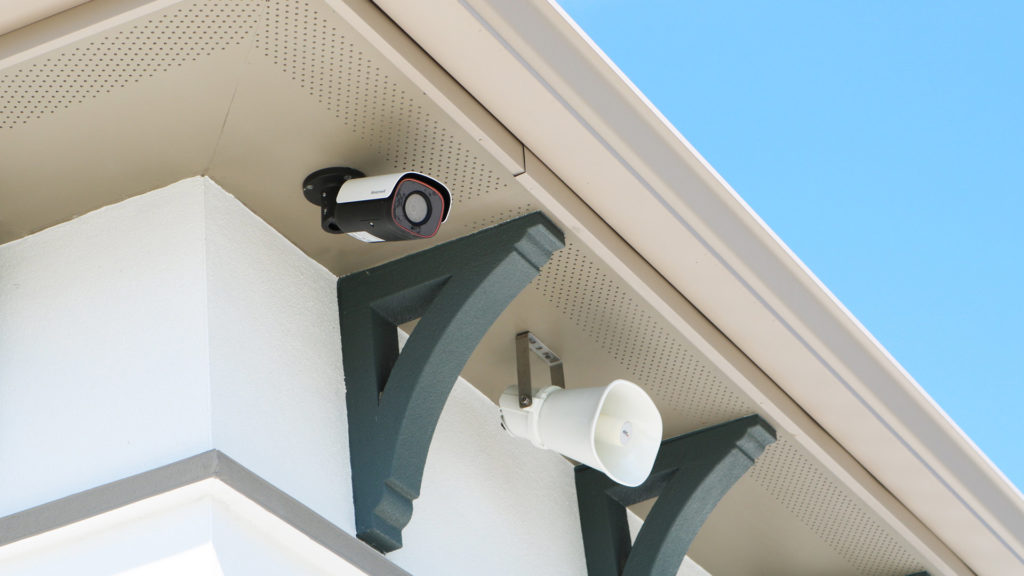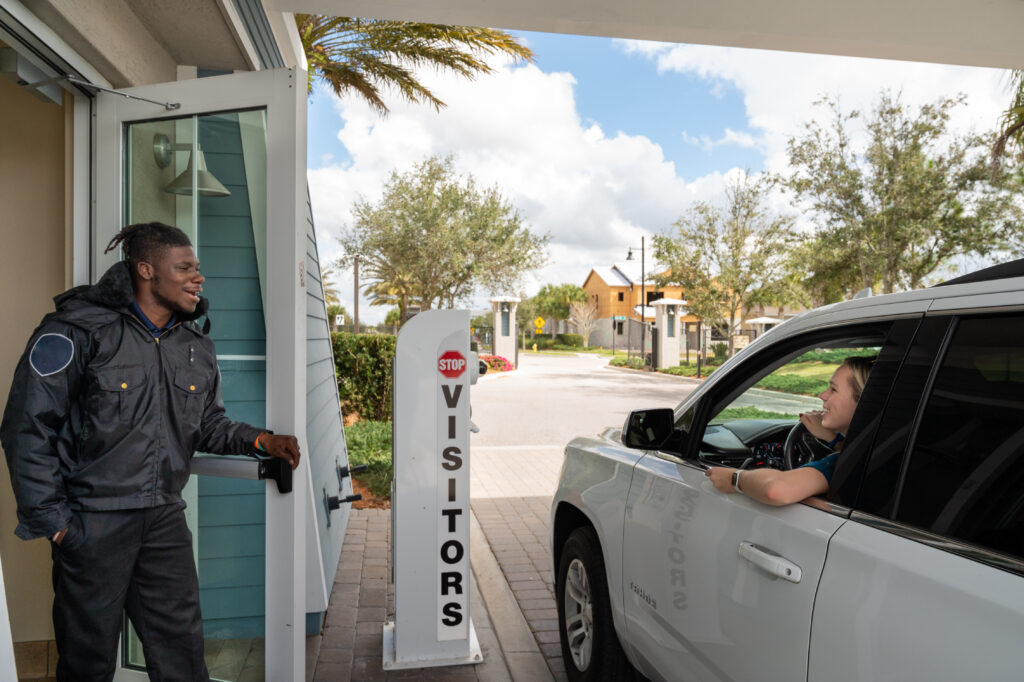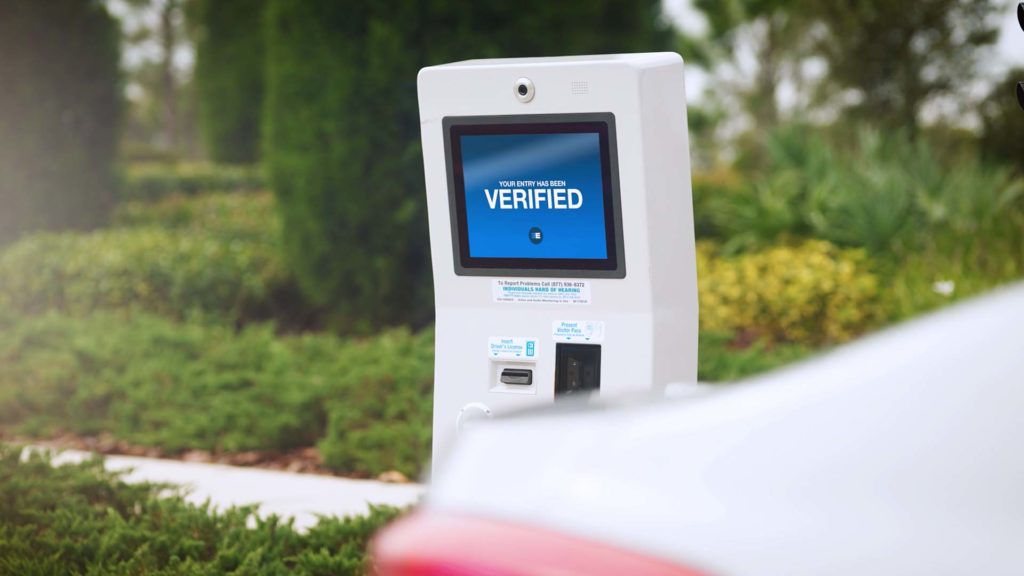Coral Bay is a 997-home community in Margate, Fla., where there was a real problem with after-hour loitering and vandalism. Spurred by complaints about intimidation, vandalism, trespassing, and disturbances, the Coral Bay Community Development District Board of Supervisors was forced to re-evalute its access and security systems. It quickly realized there were only two options — pay for more guards to man its three gates and patrol common areas, or contract with a company offering the technology, expertise, and experience to manage access control and monitoring.
After 18 months of review, the board hired Envera Systems LLC of Sarasota and Boca Raton, FL, which offers surveillance, access control, keyless entry, and visitor verification using video, IP, and real-time monitoring from a remote central station manned 24-hours a day by certified security and alarm specialists. All at about half the cost of hiring guards. “We can do security better for gated communities while saving them a lot of money,” said Envera Systems’ Senior Vice President of Business Development Tom Swain. “In this economy, communities are looking for ways to cut costs, and Envera Systems not only provides savings, but increases security at the same time.” Envera Systems installed its kiosks at Coral Bay’s three gates, pools, and parks in July 2009.
Fifteen months later, Coral Bay CDD Supervisor Dan Dean says the decision is paying dividends for residents’ bottom lines, as well as the community’s front line — its gates, pools, and parks. “For what we are getting, we are paying less than if we had one person at one gate,” he said. “It is a complete solution to the point that we almost don’t have any people doing access control and monitoring anymore; it is all done remotely. “And,” he added, “it’s given us our community back — the vandals have gone elsewhere.”
Identifying the Problems
All gated communities feature distinctions that preclude universal solutions. Coral Bay, certainly, has aspects that defy cookie-cutter applications to access and monitoring concerns. It is a built-out community in western Broward County subdivided into eight separate “villages,” each with its own homeowners association, on a grid of publicly-deeded streets. Houses in Coral Bay range from “high-end starter homes” to waterfront residences valued at more than $750,000. Residents are a “very diverse” mix of young families and retirees, renters and seasonal “snowbirds,” many of whom speak Spanish and Haitian-Creole.
But in reviewing its access and security systems, Dean said, board members compared notes with other CCDs and HOAs and learned Coral Bay shared two problems with most other gated communities. “The majority of the incidents and issues that we were dealing with involve people who actually live in the community,” Dean said. “The idea that our biggest problem is with ‘outsiders’ is false.” It surprised many that teens and others loitering and vandalizing common areas were, in fact, residents, he said, noting this realization fostered a change in “the perception of the gates” as barriers that ensure security. “A gate does not equal security. What a gate equals is access control,” Dean said. “By controlling access, we know everyone who comes through that gate. A person with nefarious intent doesn’t like being recorded coming and going.” The second common problem was more tangible — outdated technologies and expensive, ineffective manned entry points and roving patrols. Coral Bay had one gate manned by guards and two gates “with old-fashioned call boxes” in which residents punched in a code for access. Anyone with a code could enter without verifying who they were. “That system was a summary disaster,” Dean said. But the guards were the biggest headache. “There were always staffing problems,” Dean said. “There was a language barrier with a number of them. Others didn’t show up, fell asleep on duty, and didn’t project a very good image at the gate. It was $60,000 to $80,000 a year down a black hole and you never see it again.” Roving patrols to prevent vandalism and trespassers and to disperse loitering were “a joke,” he said. “They had a bad, bad gang problem,” Swain said . “It was so bad, they ran the guards off.”
Evaluating Solutions
Whatever upgrade the board selected, it would have to “retrofit” into existing gate structures, and be a new installation at pools and other amenities, Dean said. In evaluating Envera’s gate proposal, “we could track (installation and service costs) against prior costs for us to have a guarded gate,” he said. “At the pools, we tracked the cost of installation against the cost of vandalism and it made sense.” The company invited board members to visit three communities it serves in Sarasota County, including one with a public golf course and public streets similar to Coral Bay. Dean also toured its central monitoring station. “It was, honestly, a very impressive thing to see,” he said. Swain said all Envera System’s central monitoring station employees have a Class D security license and have been certified by the Central Station Alarm Association. “There is always a manager, a shift supervisor, on the floor,” he said. This integration of human eyes and ears with electronics represents a “paradigm shift” in community access control and monitoring that Envera Systems spearheads with proprietary technologies and procedures, Swain said.
The system offers these advantages:
Direct contact: Monitoring is continuous with activity-initiated interaction via two-way audio and one-way video. “With us, everything is active. (Monitors) ‘voice down’ to address people wherever kiosks are placed,” Swain said. Central station monitors not only seamlessly manage access control at gates, but conduct “e-guard tours” of amenities on a regular basis, even when not alerted to a presence by sensors. “Anyone gets in there, we do a ‘voice down’ on the PA system and “engage’ trespassers and vandals,” Swain said. “It basically stops vandalism overnight — and you can’t intimidate us.” Unlike a passive video/CCTV system, Envera System’s monitoring is in real time. There is no such thing as being vandalized or victimized by theft “and going back through the tapes to see if you can watch a guy stealing your stuff,” Swain said.
Archived documentation: All interactions are digitally logged to create an easily accessible data base. This is all done instantly and accurately with Envera System’s software program. The alternate is “a guard with a clipboard and a piece of paper,” Swain said.
Verification: Envera Systems’ real-time monitoring and interaction ensures there are no false alarms when calling emergency responders such as police and fire departments. “Everything we do has some type of verification with it,” Swain said. “It’s like On-Star for the community.”
Speed: Envera System handles about 90,000 transactions a month — or 2,349 a day — with an average response time of 15.6 seconds, Swain said. The average gate “transaction” with residents and guests — verification and “popping open the gates” — is 12.2 seconds, he said. It takes a guard “a minute or so” to do the same thing, Swain said. Residents can use fax, phone, email to alert monitors of expected guests. “They can talk to a live operator, just like they were calling the guard shack,” he said.
Costs: Swain said it costs about $200,000 a year to keep a gate manned 24/7. Envera Systems can provide the same service for about half that expense, he said. Envera Systems bases its fee on the number of homes and traffic in a community. “The traditional guard shack costs the same for 100 homes as it does for 15,” Swain said.
Implementing the New System
Many residents feel secure knowing there are guards at the gates. Therefore, it can take a concerted effort to convince them that electronic access control and monitoring systems can do it better for less money.
Dean advises board members considering this option to follow these three steps:
- “Be honest with yourself about what you expect the system to do. Don’t go in with ill-defined ideas and expectations.”
- “Be honest with your residents about what the system is going to do. Don’t let them have expectations that the system isn’t designed to meet.”
- Provide extensive on-going education with multi-lingual illustrations and videos of the kiosks and how they work.
The Coral Bay CCD staged three tutorial meetings and several demonstration weekends at the gates before the system was activated. Envera Systems representatives spent eight days at various clubhouses working with residents.
“The human-machine interface — we had to work with people so they understood it. It happened quickly, but not quickly enough,” Dean laughed. “They realized the system will only work if people are educated.” A few were educated the hard way. Shortly after the system was installed, central station monitors were alerted to the presence of trespassers at a pool closed for the night. Suddenly, the interlopers were confronted with a voice telling them they had to leave. “You can see all their heads come up and swivel to the kiosk,” said Dean, who watched the video the next day. But, they didn’t seem convinced the “voice in the box” posed much of a challenge — until the “virtual guard” identified several by what they were wearing, and warned them to leave now or the police would be called.
“That left little doubt that they were being seen and documented in real time. ‘I can see you and I know what you are doing,’“ Dean said. “They didn’t wait — they ran.”
Envera Systems has offices in Boca Raton and Sarasota, FL.
Telephone (855) 936-8372
info@enverasystems.com
enverasystems.com





